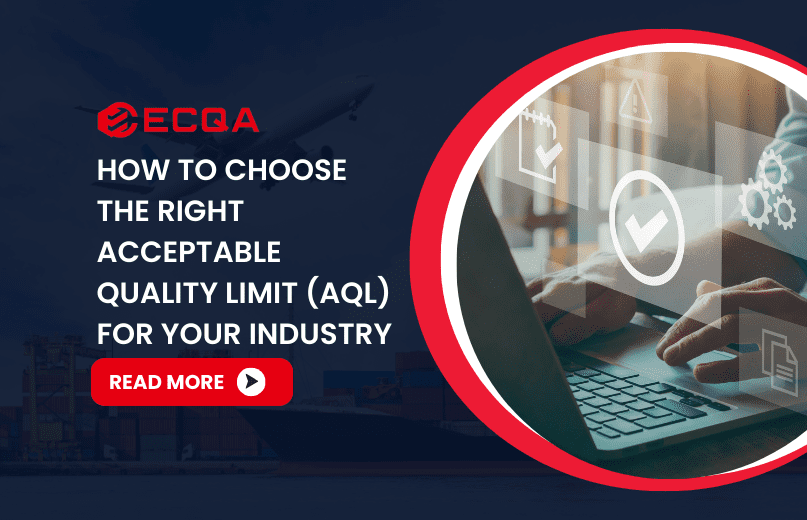
How to Choose the Right Acceptable Quality Limit
Choosing the correct Acceptable Quality Limit (AQL) is essential for manufacturers and importers to ensure product quality while optimizing costs. This guide will help you understand how to select the right AQL, considering factors such as industry standards, product inspection requirements, and customer expectations. By doing so, you’ll be able to reduce defective units and meet quality levels that align with your market’s demands.

Understanding Acceptable Quality Limit and Its Importance
AQL, or Acceptable Quality Limit, is the maximum number of defective units allowed in a lot size based on random samples during product inspection. It plays a crucial role in quality control by determining the accepted defects in consumer products. Manufacturers use AQL tables to establish the acceptable quality levels that meet industry standards.
Key Factors in Choosing the Right Acceptable Quality Limit
When selecting an AQL, several factors must be considered to ensure it aligns with your industry and product requirements:
Industry Standards and Product Type
Different industries have standard acceptable quality levels. For example, consumer products like electronics or toys may have strict quality control measures, requiring a lower AQL for major defects (e.g., 2.5 for major defects). High-risk products typically require lower AQL values to ensure minimal defects.
Lot Size and Inspection Level
The lot size and inspection level (e.g., general inspection level or special inspection level) are crucial in determining the sample size code letters and acceptable quality limits. Inspection level II is commonly used in most quality inspections, providing a balanced approach to defect detection.
AQL Tables and Code Letters
AQL tables are used to find the sample size code letters, which correspond to the lot size. These tables help determine the number of random samples to inspect and the acceptable number of defects. Using the correct AQL table ensures that your product inspection aligns with industry standards.
Customer Expectations
Understanding customer expectations is vital in setting your AQL. Products with higher customer expectations or those in competitive markets may require stricter acceptable quality limits. Ensuring that your product inspection process meets these expectations can enhance customer satisfaction and reduce returns.
Cost Implications
Lower AQL values often lead to higher inspection costs, as more samples may need to be inspected to detect defects. Balancing the cost of quality control with the risk of customer dissatisfaction is key to setting an effective AQL.
How to Implement AQL in Your Quality Control Process
Select the Appropriate Inspection Level
- Choose between general inspection levels (I, II, III) or special inspection levels based on your product’s risk and quality requirements. Inspection level II is standard for most consumer products, providing a reasonable balance of thoroughness and efficiency.
Use AQL Tables Correctly
- Refer to AQL tables to determine the sample size code letters for your lot size. This will guide you in selecting the correct number of random samples to inspect.
Monitor and Adjust AQL Levels
- Regularly review your AQL settings to ensure they remain appropriate for your evolving production processes and market demands. Adjust the AQL as needed based on feedback and defect rates.
Document and Communicate
- Clearly document your AQL decisions and communicate them to your quality control team and suppliers. This ensures consistency in product inspection and quality standards across your supply chain.
Choosing the right AQL for your industry is a strategic decision that impacts product quality, customer satisfaction, and overall business success. By considering factors such as industry standards, lot size, and inspection level, you can set an AQL that meets your quality goals while remaining cost-effective. For a deeper understanding of AQL and its role in quality control, explore our detailed article on What is AQL (Acceptable Quality Level)?.
Download our comprehensive AQL eBook for an in-depth guide on setting the right AQL for your industry.

 Request Free Sample Report
Request Free Sample Report